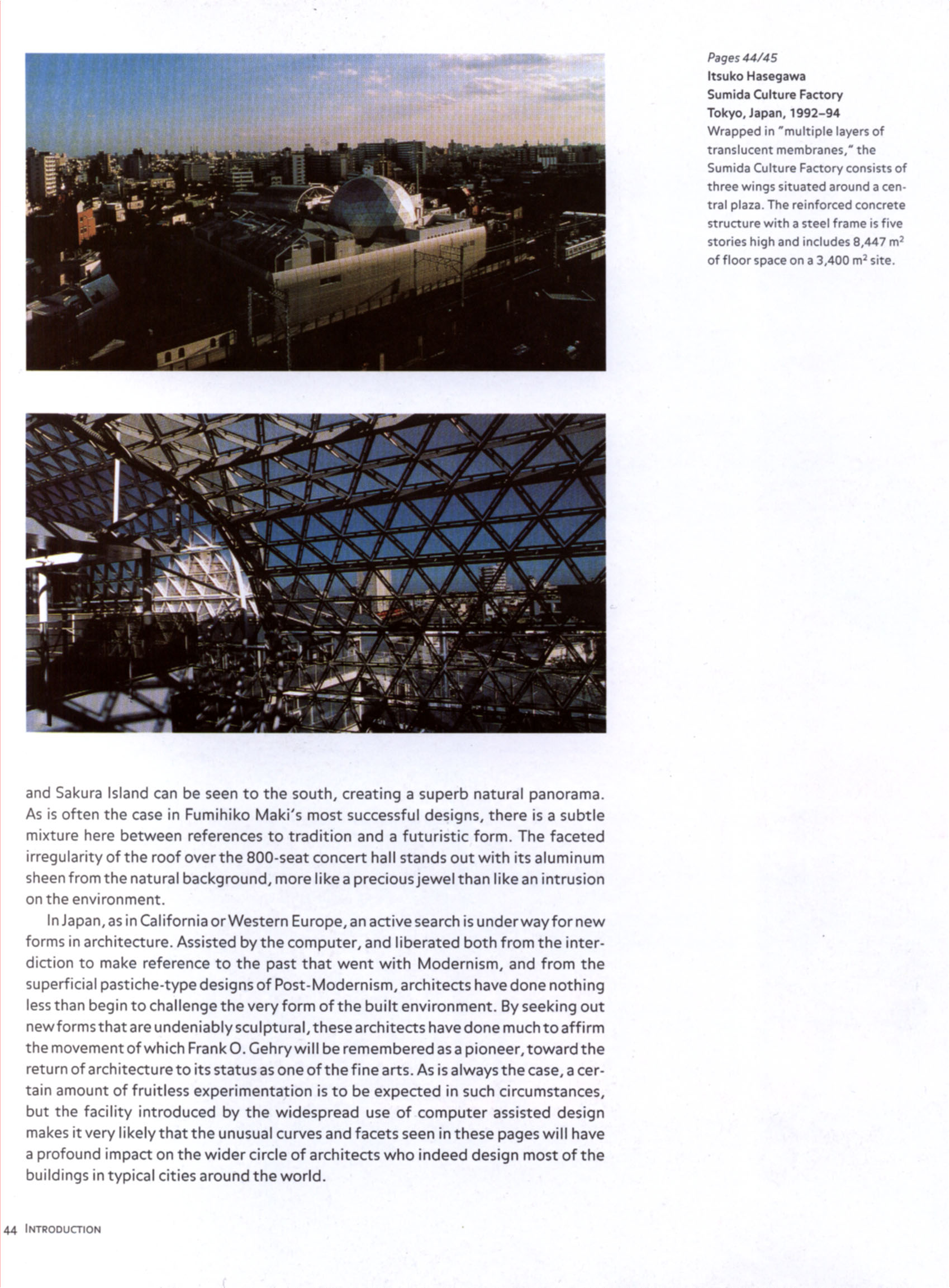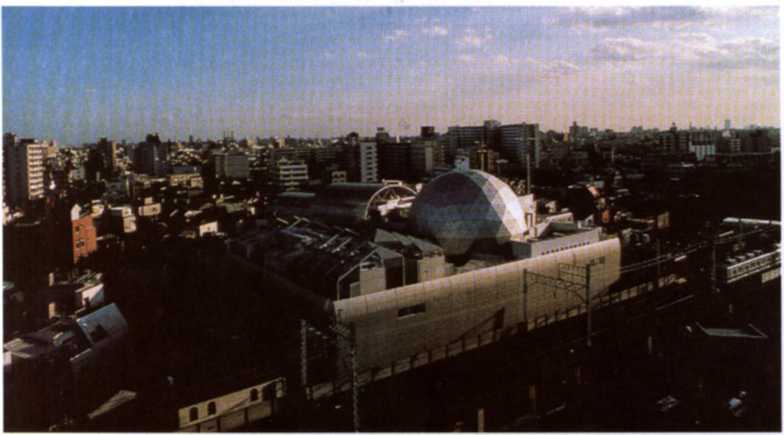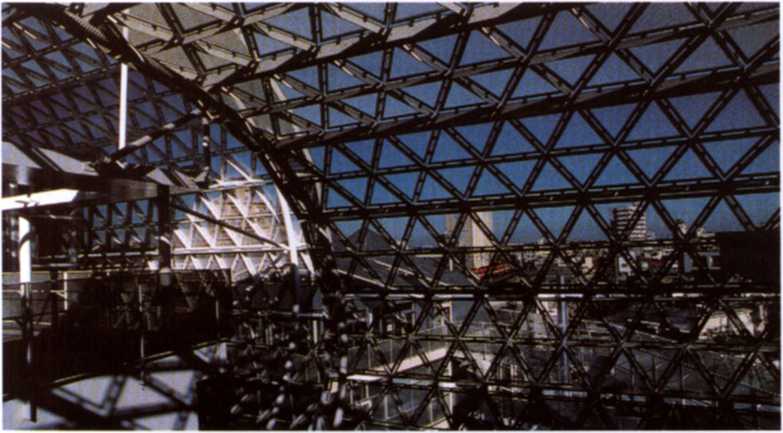88110 New Forms Taschen 041


Pages44/45 Itsuko Hasegawa Sumida Culture Factory Tokyo, Japan, 1992-94 Wrapped in "multiple layers of translucent membranes," the Sumida Culture Factory consists of three wings situated around a central plaża. The reinforced concrete structure with a Steel frame is five stories high and includes 8,447 m2 of floor space on a 3,400 m2 site.

and Sakura Island can be seen to the south, creating a superb natural panorama. As is often the case in Fumihiko Maki's most successful designs, there is a subtle mixture here between references to tradition and a futuristic form. The faceted irregularity of the roof over the 800-seat concert hall stands out with its aluminum sheen from the natural background, morę like a precious jewel than like an intrusion on the environment.
In Japan, as in California or Western Europę, an active search is under way for new forms in architecture. Assisted by the Computer, and liberated both from the inter-diction to make reference to the past that went with Modernism, and from the superficial pastiche-type designs of Post-Modernism, architects have done nothing less than begin to challenge the very form of the built environment. By seeking out newforms that are undeniably sculptural, these architects have done much to aff irm the movement of which Frank O. Gehry will be remembered as a pioneer, toward the return of architecture to its status as one of the fine arts. As is always the case, a cer-tain amount of fruitless experimentation is to be expected in such circumstances, but the facility introduced by the widespread use of Computer assisted design makes it very likely that the unusual curves and facets seen in these pages will have a profound impact on the wider circle of architects who indeed design most of the buildings in typical cities around the world.
44 INTRODUCTION
Wyszukiwarka
Podobne podstrony:
20097 New Forms Taschen 039 Eastern Stars Page 43 Itsuko Hasegawa Sumida Culture Factory Tokyo.
New Forms Taschen 008 One of Frank O. Gehry s morę successful buildings is his Vitra Design Museum i
New Forms Taschen 014 Pages 16/17 Rem Koolhaas Grand Palais Lille, France, 1990-94 Exterio
New Forms Taschen 049 Pages54/SS Renzo Piano Kansai International Airport Osaka. Japan, 1988-95 Buil
New Forms Taschen 091 Fumihiko Maki National Museum of Modern Art Kyoto. Japan, 1983-86 Fumihik
New Forms Taschen 118 1 _L „L- the modern purist tenants, and he may be right about that
New Forms Taschen 122 1 Tn . v Tl ^9- L <4 ■+ H 1 *-✓ Ki t ‘ JL Kijo Rokkaku Tokyo Budokan&nbs
New Forms Taschen 131 Ptgti 140/141 Jean Nouvel Fondation Cartier Paris. France. 1991-94&n
New Forms Taschen 166 A finał, almost amusing example is that of Philippe Starck s, "La Flamme,
więcej podobnych podstron